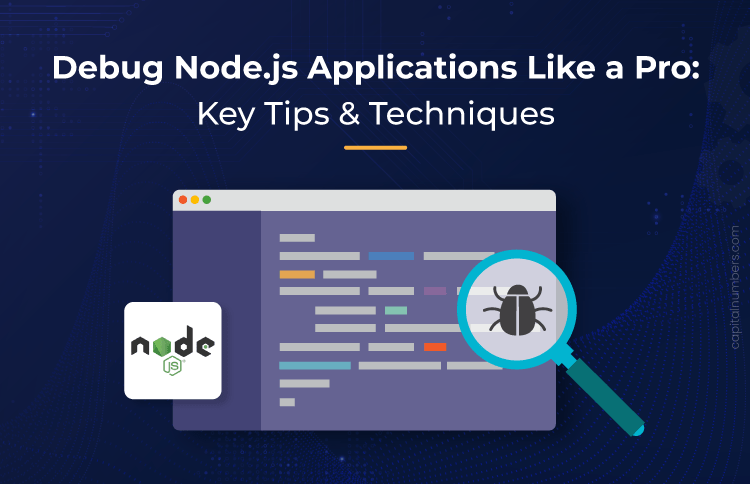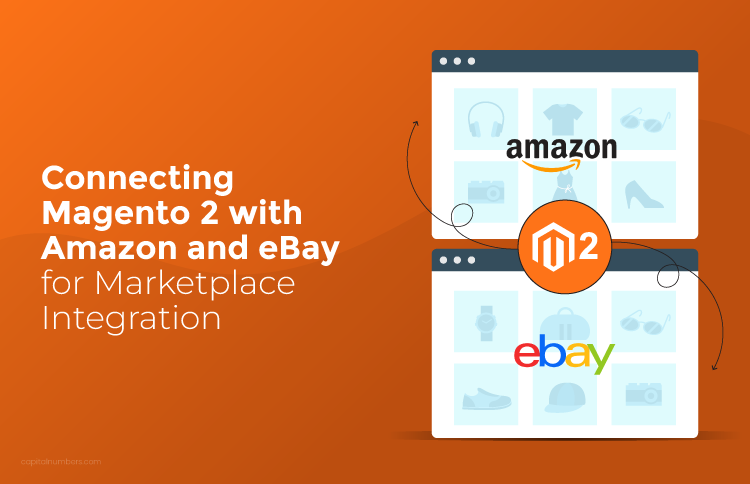Debug Node.js Applications Like a Pro: Key Tips & Techniques
Table of Contents
Debugging is a crucial part of developing Node.js applications, as it helps identify and resolve issues that can impact performance and functionality. Efficient debugging saves time and ensures code quality, making it essential for developers.
Common challenges in debugging Node.js applications include handling asynchronous operations, identifying memory leaks, and addressing performance bottlenecks. As Node.js is event-driven and non-blocking, tracing issues in callback functions and promises can be tricky.
Efficient debugging tools and techniques, such as using the Node.js debugger, Chrome DevTools, and third-party tools, are vital for tackling these challenges. By mastering these tools, developers can streamline the debugging process, enhance code reliability, and ensure a smooth user experience. Effective debugging not only fixes issues but also prevents future problems, contributing to robust and maintainable applications.
Understanding the Basics of Node.js Debugging
Node.js debugging is essential for identifying and fixing issues in your applications. At its core, debugging involves pausing your code to inspect variables, track execution flow, and find bugs.
Node.js Debugging Fundamentals:
- Breakpoints: These are markers set in your code where execution will pause, allowing you to inspect the state of your application.
- Watchers: They let you monitor specific variables or expressions and see their values change in real-time.
Included Debugging Tools:
- Node.js Debugger: A built-in tool that you can start by running ‘node inspect <your_app.js>’. It provides basic commands like ‘next’ to step through code and ‘list’ to display source code.
- Chrome DevTools: Integrate Node.js with Chrome DevTools by running ‘node –inspect <your_app.js>’. This allows you to use Chrome’s powerful debugging features, such as viewing the call stack, setting breakpoints, and watching variables.
Understanding and utilizing these basics and tools can greatly enhance your efficiency in debugging Node.js applications, making it easier to maintain and improve them.
Setting Up a Debugging Environment
To set up a Node.js debugging environment, start with an Integrated Development Environment (IDE) or text editor. Popular choices include VSCode and WebStorm.
Step-by-Step Guide:
- Install Node.js: Ensure you have Node.js installed. Download it from the official Node.js website.
- Choose an IDE:
- VSCode: Download and install from Visual Studio Code.
- WebStorm: Download and install from JetBrains.
- Install Extensions/Plugins:
- For VSCode: Install the “Node.js Debugger” extension from the Extensions Marketplace. This provides robust debugging features within the editor.
- For WebStorm: Built-in support for Node.js debugging is provided. Ensure the Node.js plugin is enabled in the settings.
- Setup Debugging Configuration:
- In VSCode, create a ‘launch.json’ file in the ‘.vscode’ folder. Configure it to define how your application should be launched for debugging.
- In WebStorm, configure your run/debug configurations by navigating to the ‘Run’ menu and selecting ‘Edit Configurations’.
By following these steps, you can establish a comprehensive debugging environment, allowing you to efficiently troubleshoot and resolve issues in your Node.js applications.
Need top-tier development for your next project? Hire our skilled Node.js developers to ensure fast, efficient, and reliable results!
Using the Node.js Debugger
The built-in Node.js debugger is a powerful tool for finding and fixing bugs in your application. The Node.js debugger allows you to pause execution, inspect variables, and understand your code’s flow.
How to Start:
- Open your terminal.
- Run your Node.js application with the debugger by using the command: ‘node inspect <your_app.js>’. This will start your app in debugging mode.
Basic Commands and Functionalities:
- cont or c: Continue execution until the next breakpoint.
- next or n: Step to the next line of code.
- step or s: Step into a function.
- out or o: Step out of the current function.
- setBreakpoint or sb( <filename>:<line_number> ): Set a breakpoint at a specific line.
- list or l: List the source code around the current line.
- watch(‘variable_name’): Watch a variable and display its value when it changes.
By mastering these commands, you can effectively debug your Node.js applications, making it easier to locate and resolve issues.
Using Chrome DevTools for Node.js Debugging
Integrating Node.js with Chrome DevTools: Chrome DevTools provides a robust interface for debugging Node.js applications. To use it, start your Node.js application with the ‘–inspect’ flag, like this: ‘node –inspect <your_app.js>’. This flag enables remote debugging.
Steps to Launch and Use Chrome DevTools:
- Run your Node.js app with ‘node –inspect <your_app.js>’.
- Open Chrome and navigate to ‘chrome://inspect’.
- Click on ‘Open dedicated DevTools for Node’.
- Your app will appear under ‘Remote Target’. Click ‘inspect’ to start debugging.
Key Features and Benefits:
- Breakpoints: Set breakpoints to pause execution and inspect state.
- Watch Expressions: Monitor variables and expressions in real-time.
- Call Stack: View the call stack to trace function calls.
- Console: Use the console for evaluating expressions and logging.
Using Chrome DevTools simplifies debugging with its intuitive interface and powerful features, enhancing your ability to troubleshoot and optimize Node.js applications effectively.
Effective Use of Console Logging
Best Practices for ‘console.log()’ Debugging:
- Use ‘console.log()’ to print variable values, checkpoints, and function outputs.
- Remove or comment out ‘console.log()’ statements in production code to keep logs clean.
Differentiating Between Console Methods:
- console.error(): Outputs error messages in red, making them easy to spot.
- console.warn(): Displays warnings with a yellow color to indicate potential issues.
- console.info(): Provides informational messages.
- console.debug(): Logs debugging messages (useful for development).
Structuring and Formatting Log Messages:
- Include context in log messages for clarity, such as function names and variable states.
- Use template literals for clearer and more readable log messages.
console.log(`User ${userId} has ${orders.length} orders.`); - Consistently format log messages to make them easy to scan and understand.
Effective use of console logging helps track and diagnose issues efficiently, enhancing the process of debugging Node.js applications.
Handling Breakpoints and Watchers
Setting and Managing Breakpoints in Node.js:
Breakpoints allow you to pause code execution at specific lines. In most IDEs, you can set a breakpoint by clicking in the margin next to the line number. When the code execution reaches this line, it will pause, letting you inspect the current state.
Using Watchers to Monitor Variable Changes:
Watchers enable you to keep an eye on specific variables. In tools like Chrome DevTools, you can add a variable to the Watch pane, which shows its value whenever it changes.
Advanced Techniques for Conditional Breakpoints:
Conditional breakpoints pause execution only when certain conditions are met. In Chrome DevTools, right-click on a breakpoint and select ‘Edit Breakpoint’ to add a condition. This helps debug more complex scenarios without stopping execution repeatedly.
By mastering breakpoints and watchers, you can debug Node.js applications more efficiently, identifying issues quickly and accurately.
Memory Leak Detection and Performance Profiling
Tools and Techniques for Detecting Memory Leaks:
Memory leaks occur when unused memory is not released. Tools like Node.js’s built-in inspector and external tools such as ‘heapdump’ can help identify leaks. Using ‘heapdump’, you can capture memory snapshots to analyze retained objects that shouldn’t be there.
Using Node.js Profiling Tools:
Run your application with ‘node –inspect’ to use profiling tools. This opens up Chrome DevTools for profiling, where you can take CPU and heap snapshots to examine memory usage and performance.
Analyzing Performance Bottlenecks:
Identify performance bottlenecks by analyzing CPU profiles and using tools like ‘clinic’ and ‘0x’ for detailed flame graphs. These tools help visualize where your application spends most of its time, enabling you to optimize slow functions and improve overall performance.
By effectively using these tools and techniques, you can detect and resolve memory leaks, ensuring your Node.js applications run smoothly and efficiently.
Debugging Asynchronous Code
Challenges of Debugging Asynchronous Code in Node.js:
Debugging asynchronous code is tricky because operations don’t execute sequentially. Callbacks, Promises, and async/await can make it difficult to track the flow of execution and pinpoint issues.
Techniques for Tracing Asynchronous Operations:
Use logging extensively to trace the flow of asynchronous operations. Node.js provides the ‘async_hooks’ module to track asynchronous resources and their lifecycle. Additionally, tools like ‘longjohn’ can help provide extended stack traces for better insight.
Using async/await and Promises Effectively:
Async/await syntax simplifies debugging by making asynchronous code look synchronous. Use try/catch blocks to handle errors gracefully. For Promises, use ‘.catch()’ to handle rejections and ‘Promise.all()’ to run multiple promises concurrently while managing their results efficiently.
By employing these techniques, you can effectively debug asynchronous code, ensuring smooth and reliable Node.js application performance.
Utilizing Third-Party Debugging Tools
Overview of Popular Tools:
- Nodemon: Automatically restarts your Node.js application when file changes are detected. Install with ‘npm install -g nodemon’.
- Noden: Enhances the debugging experience with better stack traces. Install with ‘npm install -g noden’.
- PM2: A production process manager for Node.js apps, it provides monitoring and clustering capabilities. Install with ‘npm install -g pm2’.
Installation and Configuration:
- For Nodemon, use ‘nodemon <your_app.js>’ to start.
- For Noden, start with ‘noden <your_app.js>’.
- For PM2, use ‘pm2 start <your_app.js>’ to manage and monitor your app.
Pros and Cons:
- Pros: Improved efficiency, better error tracking, and process management.
- Cons: Additional setup and learning curve, potential overhead in development environments.
Using third-party tools can greatly enhance your debugging and development workflow, making it easier to manage and troubleshoot your Node.js applications.
Testing and Debugging in Production
Best Practices for Debugging in a Production Environment:
Debugging in production requires caution to avoid disrupting services. Use feature flags to enable or disable features dynamically and handle exceptions gracefully without exposing sensitive information.
Tools and Techniques for Remote Debugging:
Tools like ‘node –inspect’ allow remote debugging. Combine this with SSH tunnels or services like Ngrok to securely debug from your local machine. Tools such as Sentry or New Relic provide error tracking and performance monitoring.
Importance of Logging and Monitoring:
Implement comprehensive logging using tools like Winston or Bunyan to capture detailed application behavior. Monitoring tools like Prometheus and Grafana help track performance metrics and alert on anomalies. Logging and monitoring are crucial for identifying issues quickly and maintaining application reliability in production.
You May Also Read: MongoDB and Node.js: How Are They Changing the Future of App Development?
Conclusion
We’ve covered essential tips and techniques for debugging Node.js applications, including setting up your environment, using the Node.js debugger, leveraging Chrome DevTools, and employing third-party tools. Applying these methods in your projects can greatly enhance your debugging efficiency and code quality. Happy Coding!















